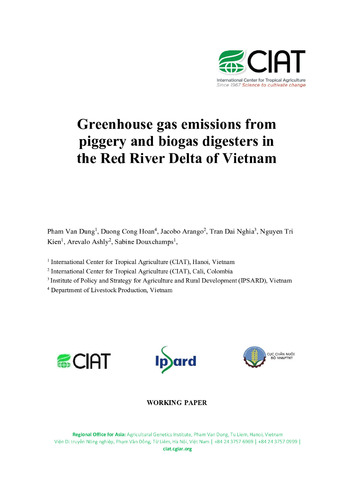Greenhouse gas emissions from piggery and biogas digesters in the Red River Delta of Vietnam
High demand for pork consumption in Vietnam has led to a shift of pig production systems from smallholder to industrial-scale farms, particularly in the Red River Delta. This production intensification also produces massive manure and urine quantities, leading to water, air, and soil pollution. The use of biogas plants has been seen as efficient to achieve in the same time a decrease in pollution, and a provision of biogas resources and bio-organic fertilizers. However, increasing pig head density has been causing great pressure on biogas digesters, as their size is not big enough for treatments anymore. Inappropriate utilization and management of biogas digesters can not only cause losses from pig wastes, but also contributes to increase greenhouse gas (GHG) emissions such as carbon dioxide (CO2), methane (CH4), and nitrous oxide (N2O). This case study aims to identify the role and contributions of biogas digesters to better manage the sources of GHG emissions from pig wastes for different types of pig farms. Four provinces of the Red River Delta were selected to test the pig waste management efficiency of biogas digesters and measure GHG emissions from these systems. The findings show that CO2, CH4 and N2O emission rates from pig manure are at least twice as much what is allowed under the Vietnam national technical regulation on ambient air quality. However, the GHGs emission rate does not significantly differ between smallholder and industrial-scale farms in the four surveyed provinces. Sampling position (between inside piggeries and outside the outlet of biogas digesters) did not affect significantly GHG emissions rate. These results confirm that the pig waste management of biogas digesters for both smallholder and industrial-scale pig farms is not efficient and that efforts need to be invested to mitigate GHG emissions in pig production.
Reducing pig density per piggery is highly recommended. The modification of biogas digester structure to separate solid pig manure and urine should also be considered. Otherwise, the application of other alternative aerobic or anaerobic digestion technologies should also be encouraged and promoted. Biogas digesters in pig production have a significant role to play in Vietnam government’s mitigation strategies, as well as from the perspective of biosafety and animal husbandry policies.

